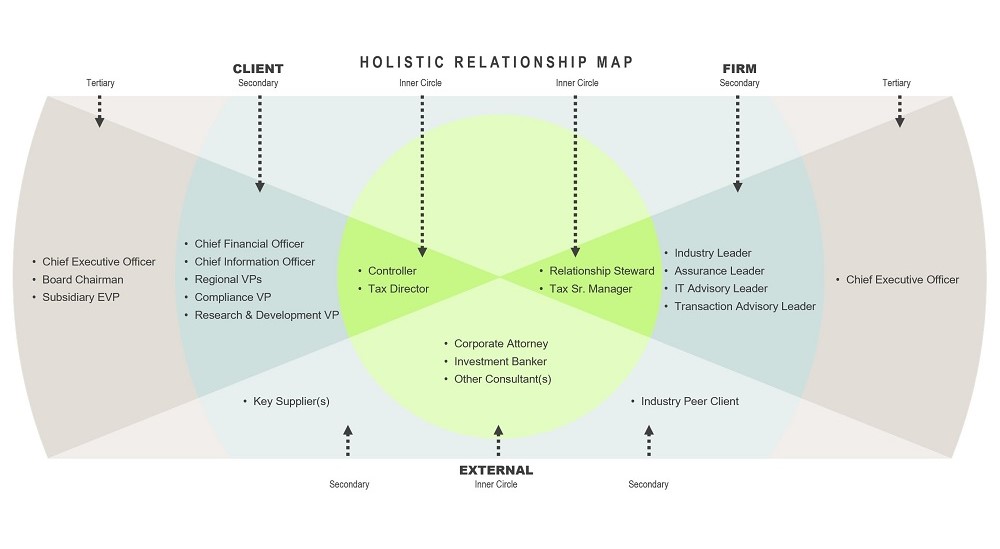Traditionally, accountants and other professional service providers have built their practices on the merits of individual relationships within their client organizations. Business owners and top executives place significant trust in them to address critical business needs. As important and fruitful as these relationships can be, they can be limited in scope and sustainability over the long term – especially as client businesses become larger and more complex.
For example, a CFO may be thinking about all things financial, but the CIO may have concerns over cyber security, an issue your firm is equipped to deal with. Unless you have access to or interaction with the CIO, this issue may go undiscovered or addressed by a competitor. Furthermore, consider if the CFO departs and is replaced by the Controller. Unfortunately, you did not establish a relationship with the Controller, and she has a predisposition to hire a competing firm with whom she worked in a previous job.
In either of these scenarios, if there had been an intentional effort to deepen relationships by establishing more connections – involving more people at the client and at your firm – there would be a much higher probability of retaining and expanding the client’s business.
It may help to think of the relationship as a bowtie. Your personal connection with the key client contact (the CFO in our example) is the inner circle, or the central “knot” of our tie. On either side we have the “fins” of the tie, which expand out from the knot, giving the tie its style and fullness. In our model, the left fin represents other potential contacts in the client organization. The further they are on the fin the more distant they are in relation to those in the inner circle. Likewise, the right fin represents others in your firm who could potentially play a role in the client relationship.

As the profession continues its shift from a focus on traditional compliance-oriented services to more holistic advisory-oriented relationships, the ability to approach clients with a broad perspective, identify an array of challenges, and match potential solutions is critical. Effectiveness in this area requires a working (not intensive) knowledge of the full scope of services available through your firm and your network. It also requires a natural curiosity and desire to learn as much as possible about your client’s current and desired future reality.
Armed with this advisor’s mindset, the professional can then be more strategic and intentional about filling out the bowtie, connecting people beyond the central knot and linking those across the fins. For example, introduce the head of Employee Benefit Plan Audits to the VP of Human Resources. Coordinate a meeting between your IT Advisory leader and the client’s CIO. Take it a step further and make relevant connections with the client outside your firm. Offer to introduce the COO of your client organization with another COO at a long-time peer client.
By filling out your “bowtie,” or holistic relationship model, with your key clients, you will position yourself more as a trusted advisor. This will elevate the value you deliver, leverage the strength of your firm, deepen your client relationships, and grow your practice well into the future.
Next Steps
To learn more about building a dynamic culture through relationships, and how to position yourself as a Trusted Advisor, please Contact Us to schedule a complimentary phone consultation. The Rainmaker Companies can help you Grow Your Firm, Grow Your Practice, or Grow Your Self.
Scott Moore – Executive Vice President of The Rainmaker Companies





